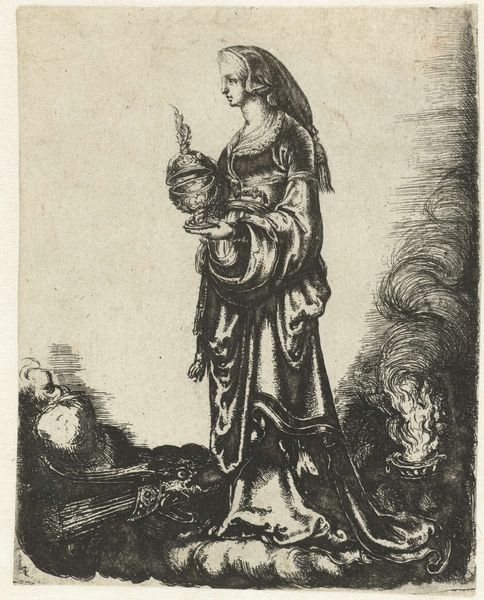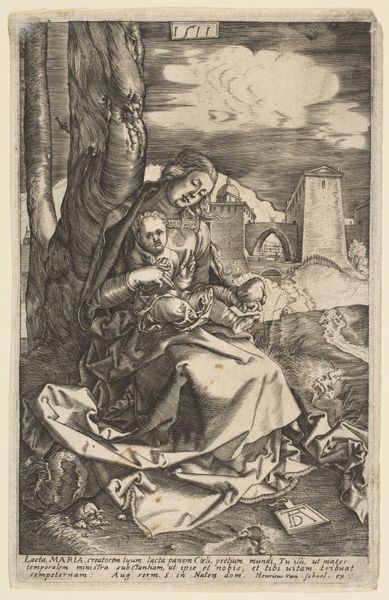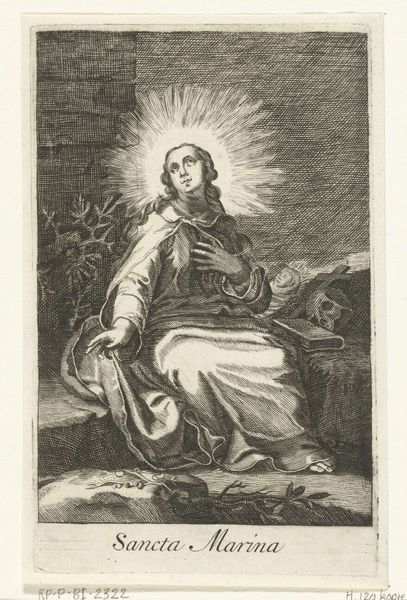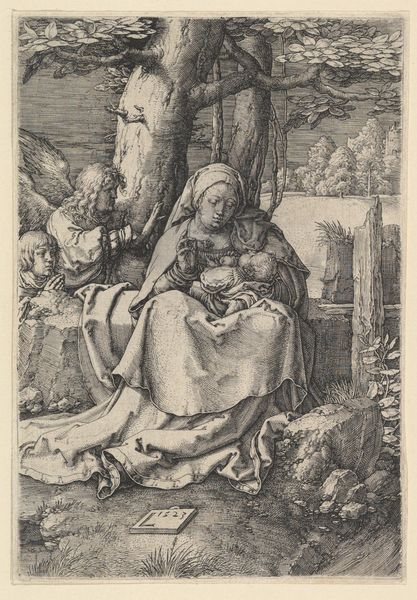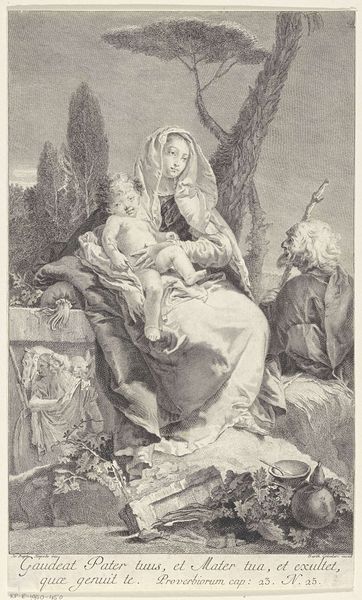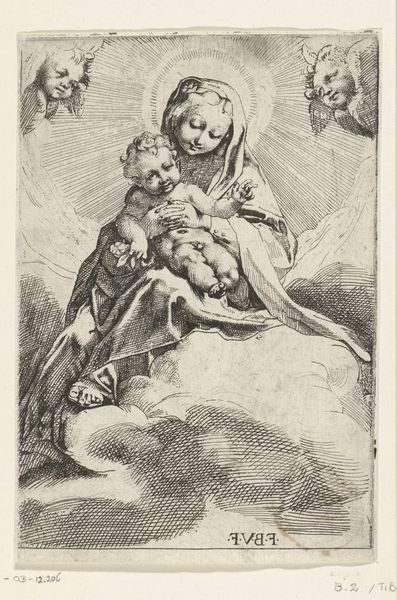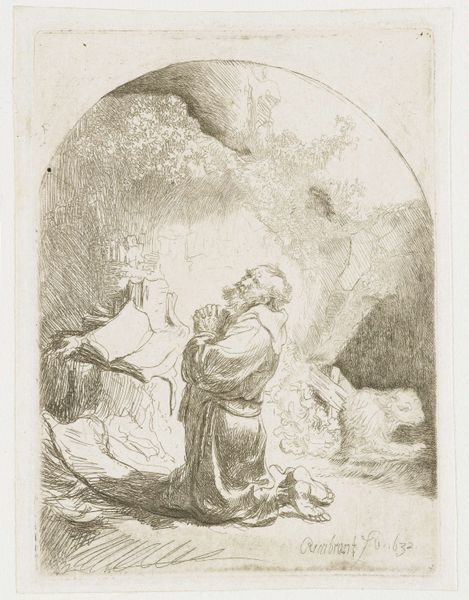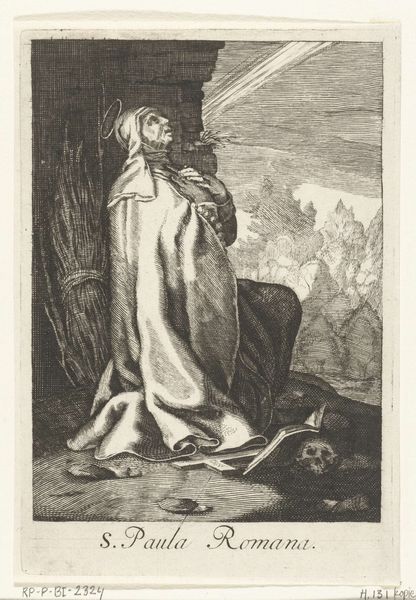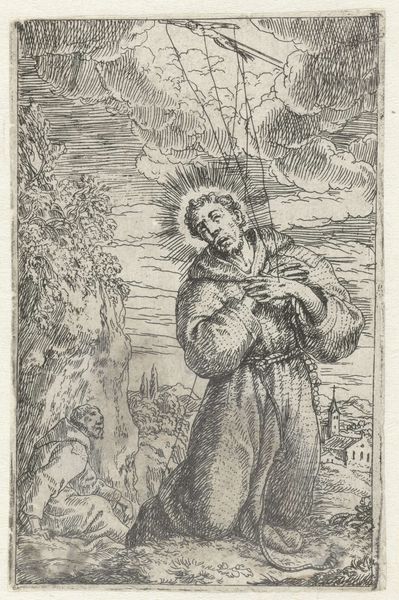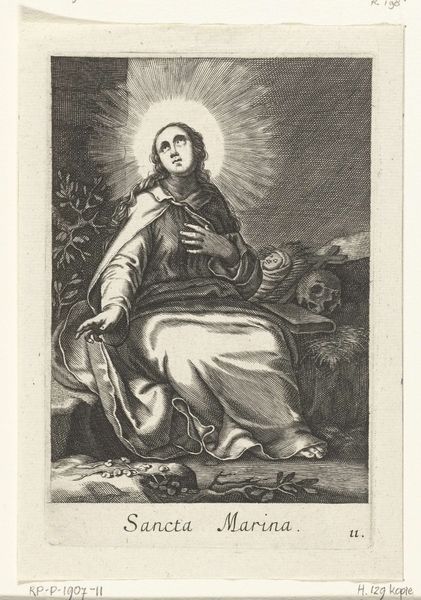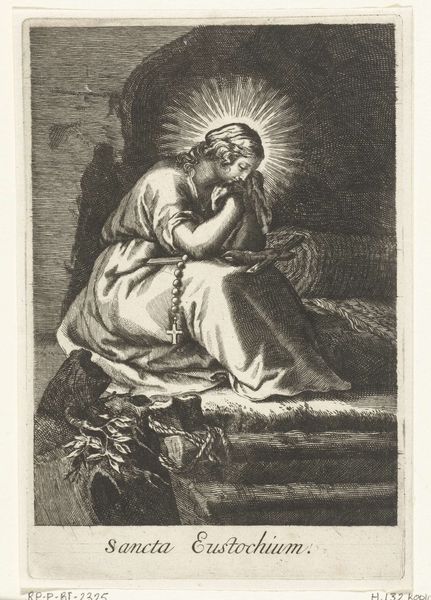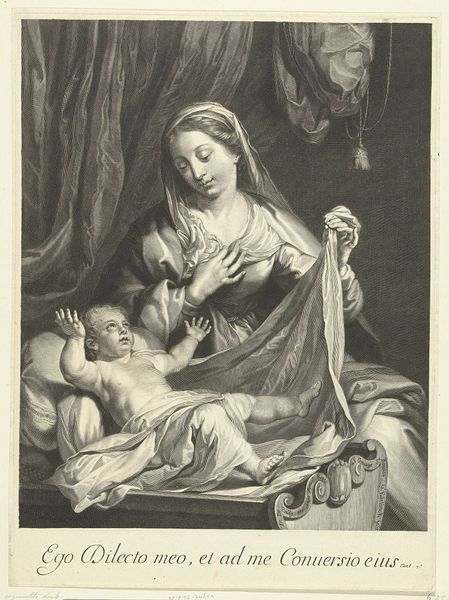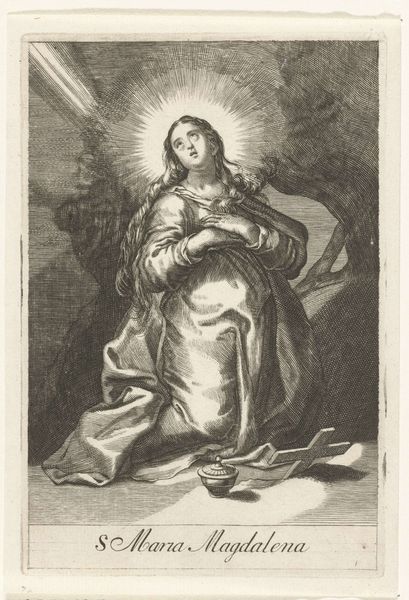
print, etching
#
portrait
#
allegory
#
baroque
# print
#
etching
#
chiaroscuro
#
history-painting
Dimensions: height 140 mm, width 104 mm
Copyright: Rijks Museum: Open Domain
Jan Barentsz. Muyckens made this etching of the penitent Mary Magdalene in 1637. The scene shows Mary Magdalene kneeling in prayer in a cave, a crucifix looming to the left. Made in the Netherlands, this image draws on a period of intense religious and political upheaval. After the Reformation, Dutch artists walked a tightrope, producing religious imagery for private devotion in a newly Protestant society. This was a period that saw the rise of the Dutch middle class and a flourishing art market which also gave rise to institutions and a burgeoning academic art world. Muyckens uses a variety of cultural codes to communicate Mary Magdalene’s story: the skull, the crucifix, and the cave all point to her repentance and devotion. These symbols would have resonated with a wide audience, regardless of their specific religious beliefs. Understanding the social and institutional contexts of art like this requires careful historical research. By looking at the artist’s life, the cultural climate, and the institutions that shaped artistic production, we can gain a deeper appreciation for the complex meanings embedded in this seemingly simple image.
Comments
No comments
Be the first to comment and join the conversation on the ultimate creative platform.
